This September and October, the WATER Institute hosted our first-ever Beaver Coexistence Field Training and Tour alongside the Beaver Institute and Connected Ecology. The team focused on two sites in California’s Central Valley—the Cosumnes River Preserve and a suburban neighborhood in El Dorado Hills. Over the course of three days, experts shared hands-on instruction with 14 coexistence practitioners and demonstrated the positive potential of beaver coexistence strategies with 41 wetland manager, agency, philanthropic, and nonprofit partners.
As weather whiplash and the effects of climate change affect California, beaver can provide a stabilizing effect, mitigating floods, reducing drought and wildfire, sequestering carbon, improving water quality, and creating habitat across entire watersheds. Our new California Beaver Coexistence Training and Support Program, funded by the California Department of Fish and Wildlife, provides land managers and coexistence professionals with technical and financial resources to make coexisting with nature’s busiest engineers easier and more affordable.
BeaverCorps Trainees Learn Coexistence Techniques
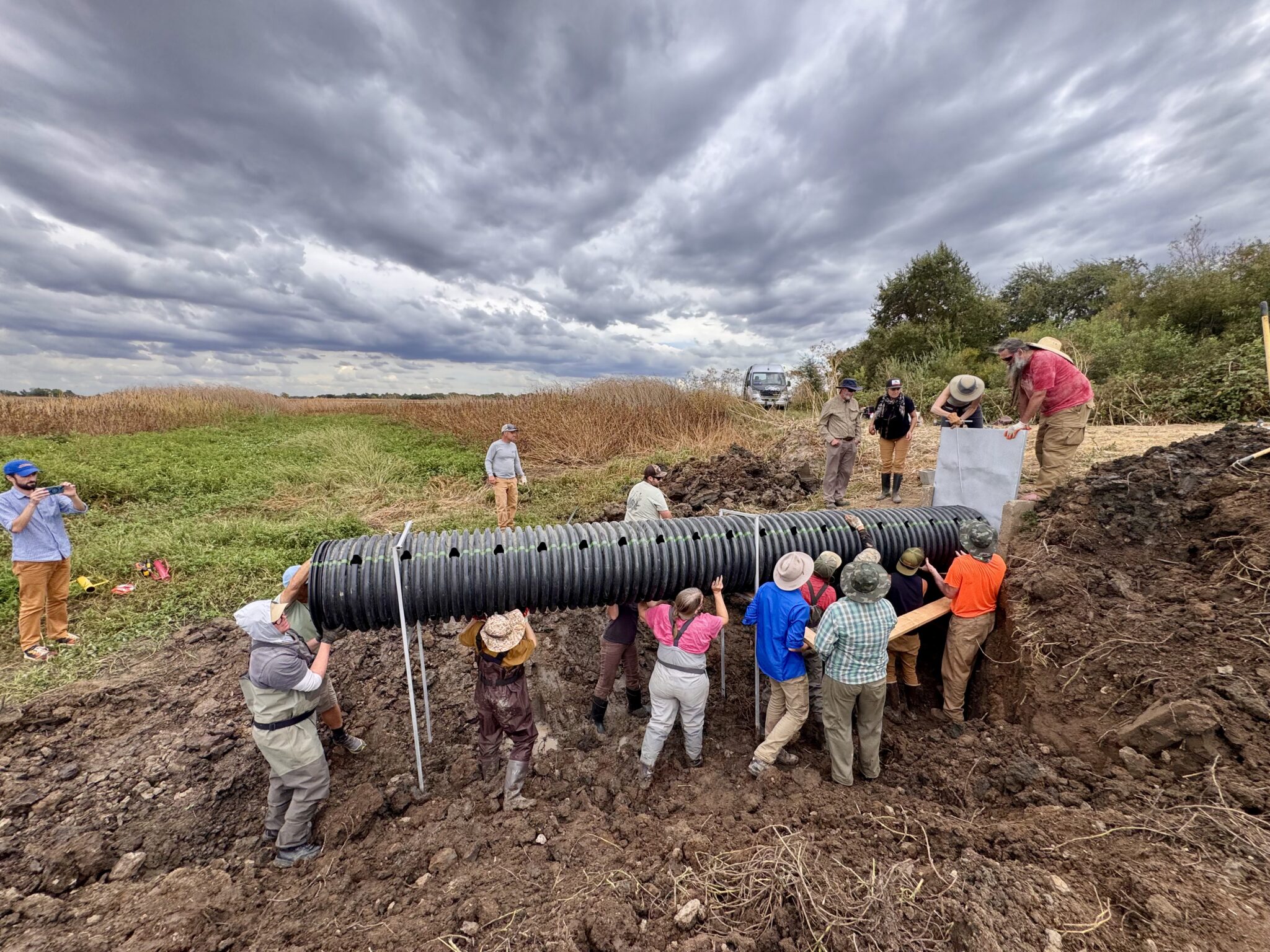
BeaverCorps Trainees work together to install a Beaver Back Saver at the Cosumnes River Preserve. Photo: Brock Dolman/OAEC
For two days, experts from the WATER Institute, the Beaver Institute, and Connected Ecology provided hands-on training and real-time experience for a cohort of BeaverCorps trainees who convened from across the state. Together, they installed a series of four coexistence devices, whose implementation was designed by Cathy Mueller of Connected Ecology and land manager partners from each site.
The Cosumnes River Preserve is a site co-owned and managed by 10 entities, including the Bureau of Land Management and Ducks Unlimited. Amy Fesnock, Preserve Manager at Cosumnes, shared that, “There are 40 managed ponds that create 1000 acres of wetlands and surrounding organic rice fields that are managed in a wildlife-friendly way. We find we spend a good bit of time battling beavers. They don’t always agree with our management plans. In managing them, we put the labor in. We spend all day undoing what they do all night.”
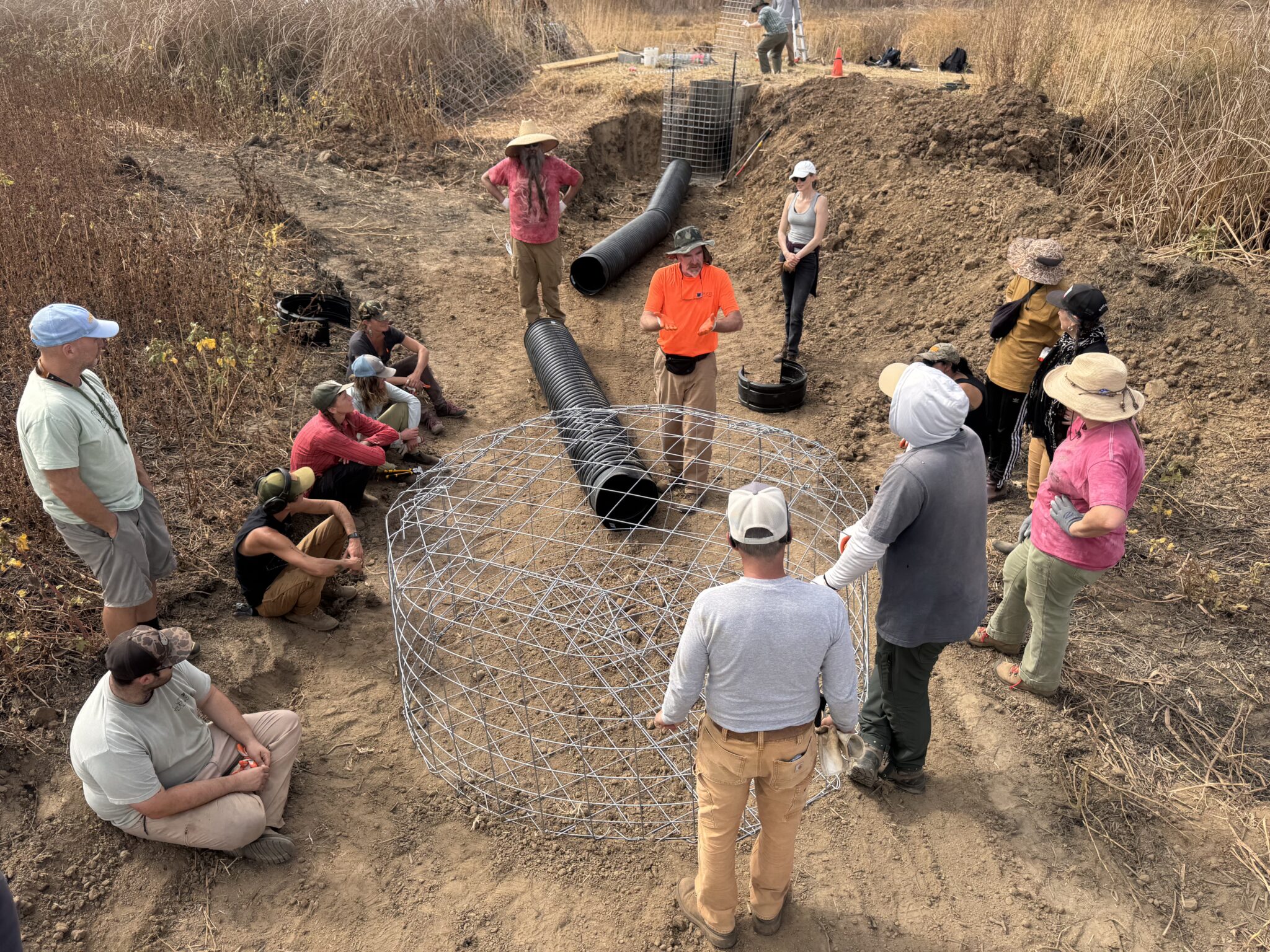
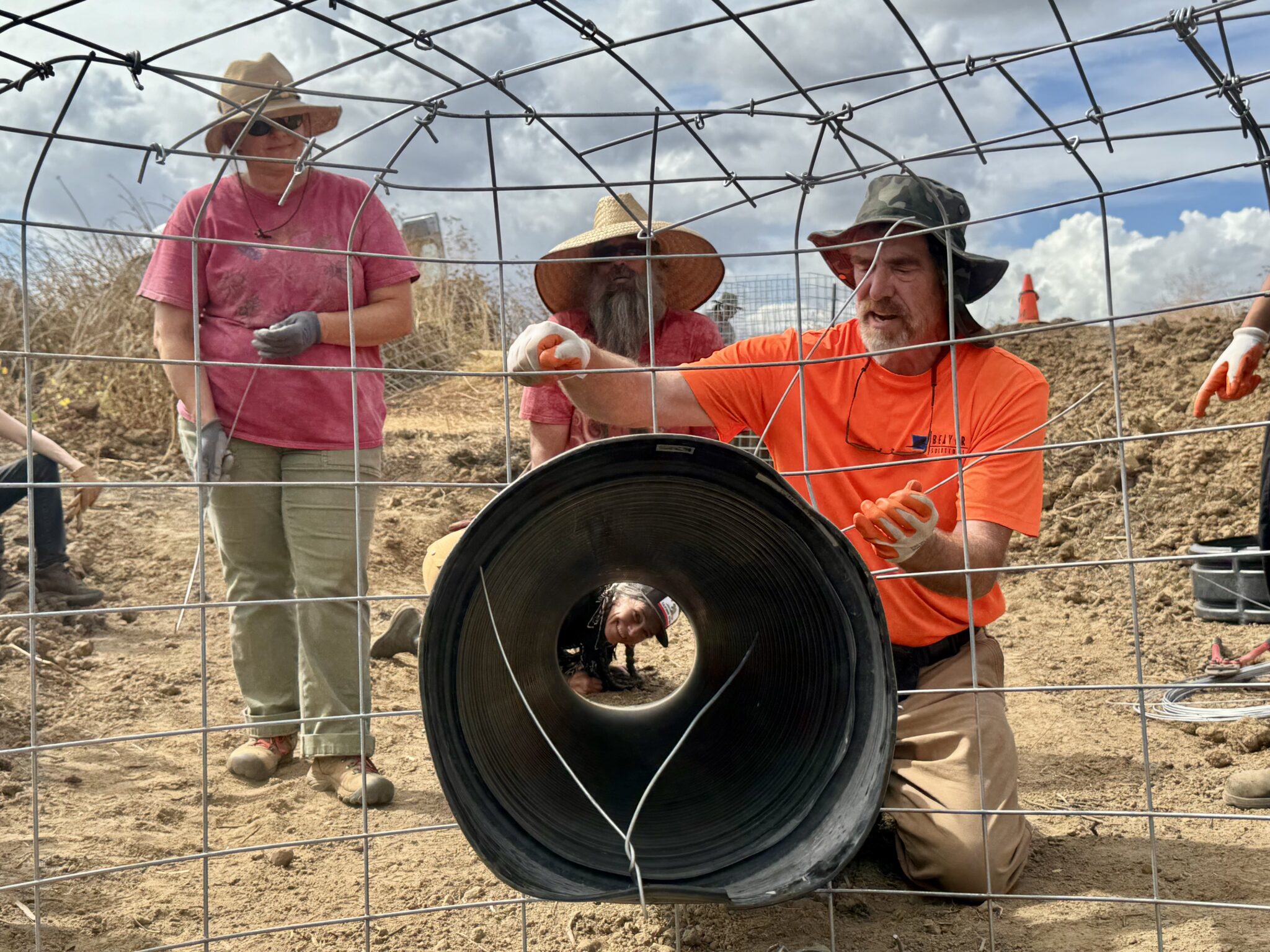
Mike Callahan from the Beaver Institute demonstrates how to assemble a Fence and Pipe Flow Device. Photos: Brock Dolman/OAEC
In engineered wetlands like those at the Cosumnes River Preserve, free-flowing, unblocked water conveyance structures, culverts, and drains are critical to managing changing daily and seasonal water levels. Beaver regularly block these structures. To remedy this challenge, trainees installed two types of deterrence structures: a Beaver Back Saver and a Fence and Pipe Flow Device. These coexistence devices will help flip the script, enabling beaver to bring their benefits to the ecosystem while reducing the workload for land managers who are already stretched thin.
From there, the BeaverCorps team was off to El Dorado Hills to install a Flexible Pond Leveler and tree exclusion fencing in a suburban creek that houses two beaver dams. Here, the proximity of a creek and dams to homes has neighbors on edge. But the inclusion of a Pond Leveler will encourage beaver to stop their building and will keep water levels stabilized at base flow. Exclusion fencing will also lessen landowner concerns about losing ornamental and native trees due to beaver activity.
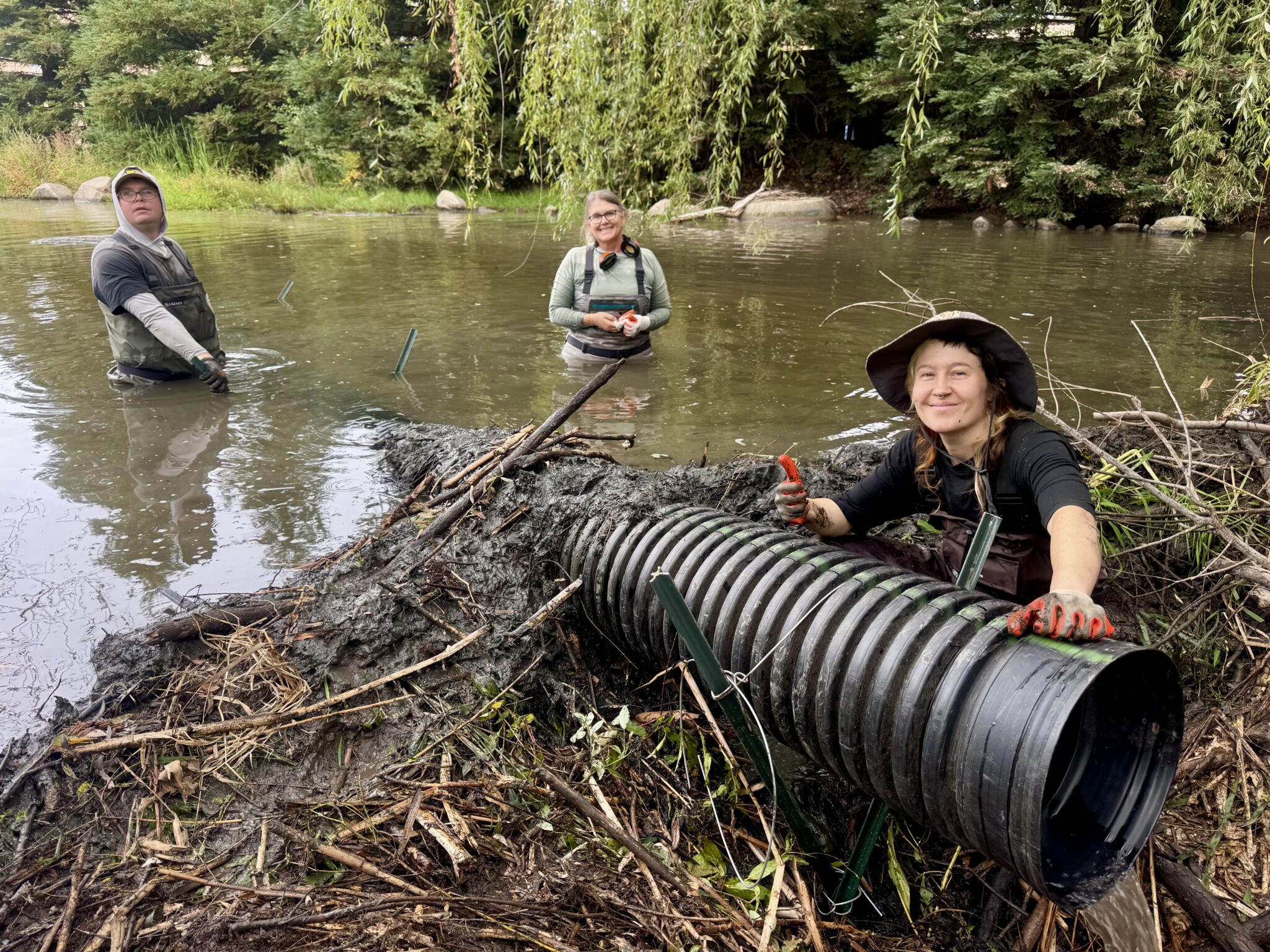
This newly installed Pond Leveler allows water to flow through the dam without the beavers detecting and plugging the leak. It consists of a long, flexible pipe installed through the dam, with the inlet end submerged and protected by a wire cage. This “hides” the water flow, so beavers don’t try to repair the opening, while the height of the outlet pipe on the other side of the dam determines the maximum water level of the pond.
Photos: Brock Dolman/OAEC
When asked how beaver coexistence could be beneficial in this community, Cathy shared, “It is important to notice that by sustaining aquatic habitat for all the abundant wildlife in the neighborhood, we are maintaining a well-hydrated green space that is less likely to burn if a fire were to come through. We know from studies in mountain meadows where beavers are present, or that are already hydrated for other reasons, that fires move more slowly or stop in these places.”
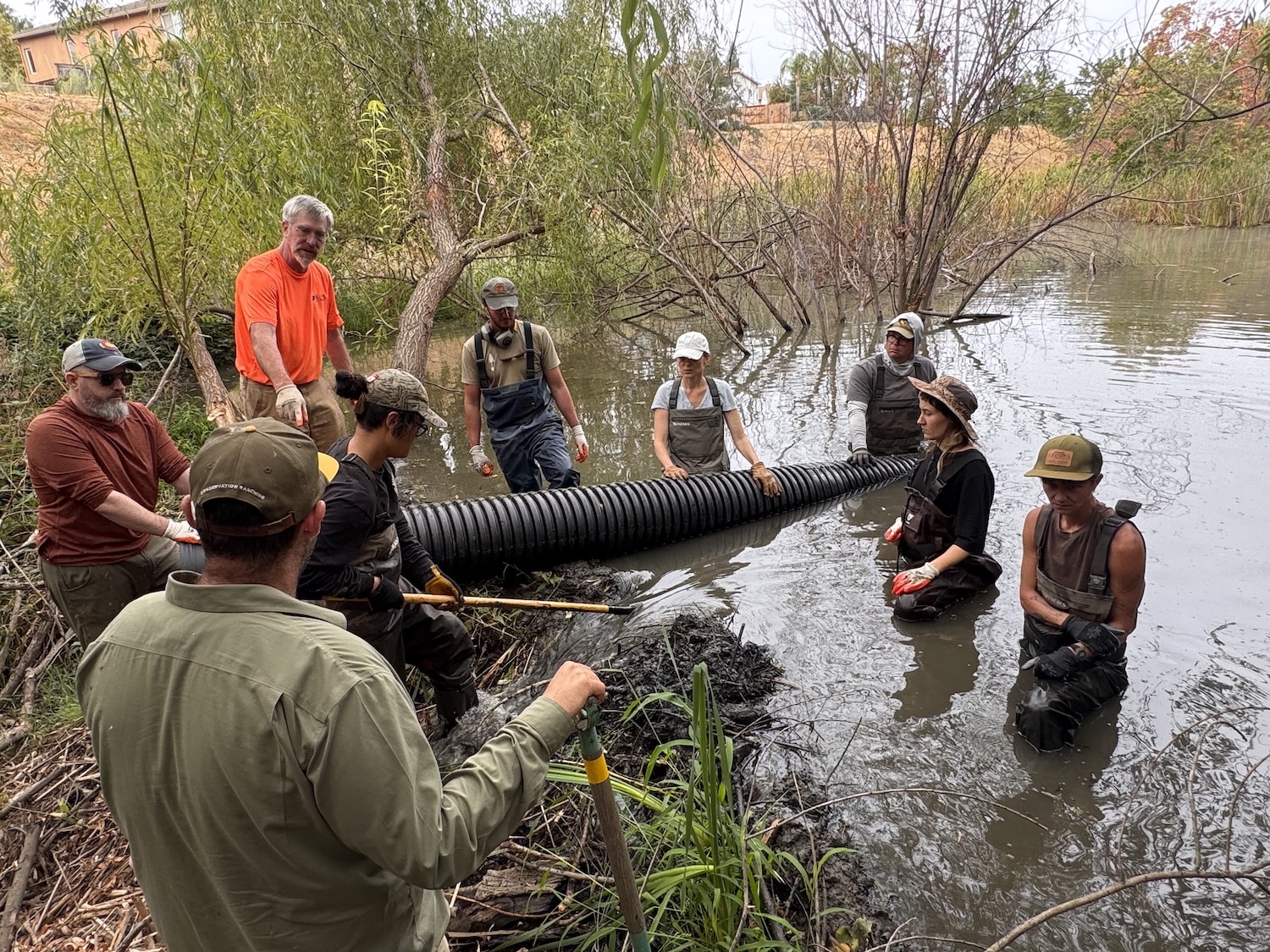
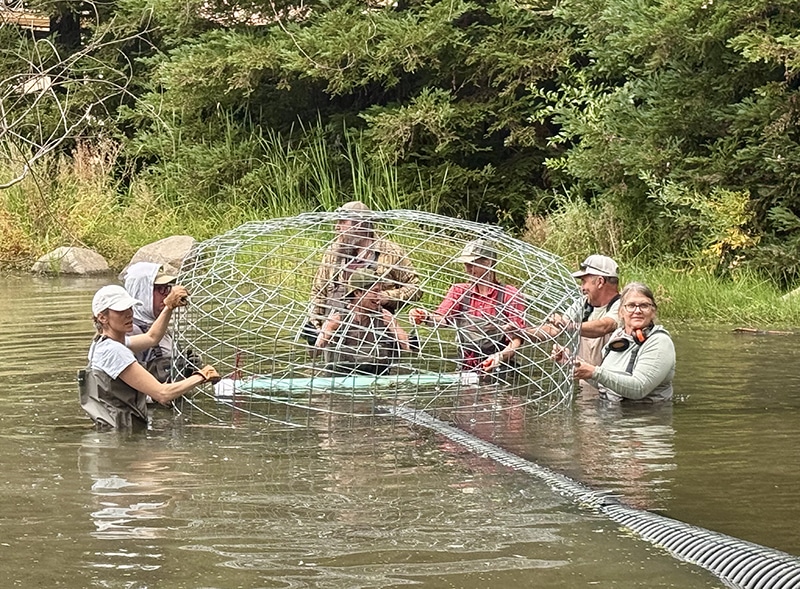
BeaverCorps trainees install a Pond Leveler with Mike Callahan of the Beaver Institute (left) and Cathy Mueller of Connected Ecology (right).
Photos: Brock Dolman/OAEC
“Here, there is also a change in how water moves over the land during storms. As it moves through the neighborhood, it spreads out in the beaver ponds, which slows the water down. The presence of their dams softens the impact of a sudden rush of water flowing through this place,” she added.
Beaver Coexistence on Tour
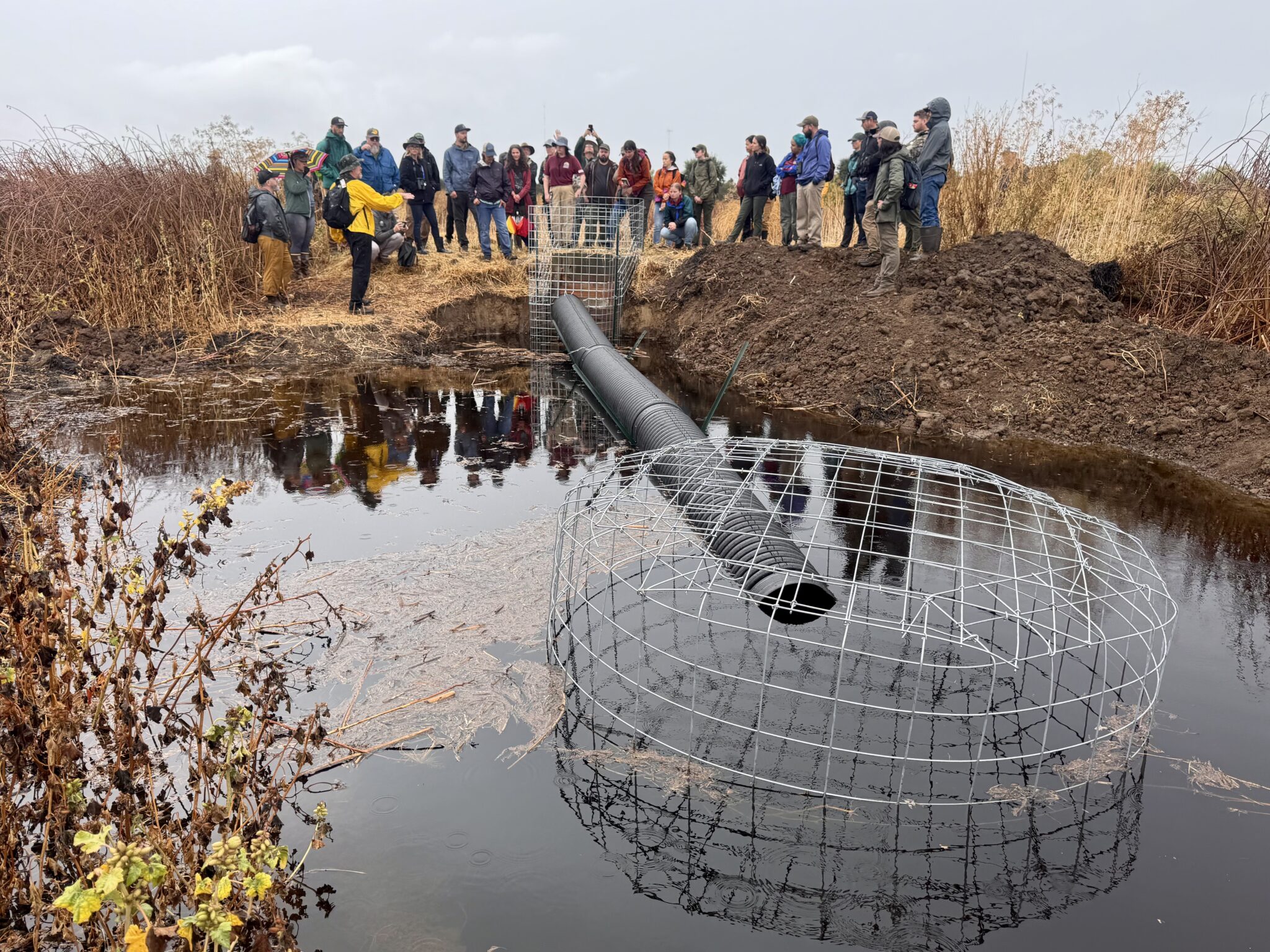
A tour group of 41 land managers gathered to learn about beaver coexistence techniques such as this Fence and Pipe Flow Device at the Cosumnes River Preserve. Photo: Brock Dolman/OAEC
With the installations complete, the WATER Institute conducted a tour for agency, business, and nonprofit partners. During an unseasonably early October downpour, this hearty group saw how these devices function during high flows, as our expert tour leads shared thoughtful technical, economic, and beaver-based information.
Our first stop was at the Cosumnes River Preserve to see the Beaver Back Saver and the Fence and Pipe installations. Tour participants shared that they had joined for many reasons: some in the midst of active beaver conflict on land they manage, others gathering resources for that possibility, and still more who are permitting or funding coexistence projects.
As the group trudged through soaked fields, Gabrielle Katanic, Farm Operations Business Manager at Lundberg Rice Family Farms, shared, “We haven’t been having conflict with beaver, but we’re working with lots of rice farmers, and we’re trying to collect resources so if conflict occurs, we have something to point our farmers to. When it comes to rice, there’s so much opportunity to create habitat. We’ve seen such success with rice farmers orienting around habitat for birds and salmon, as with the Nigiri Project; what if we turn to beavers next?”
The Sacramento Area Sewer District biologists noted, “We have a need for coexistence strategies. We have had beaver on the lands we manage, known as the Bufferlands, since the 1990s and over the years we’ve tried management strategies that haven’t always worked in the long run. This has been a really relevant tour for us today.”



Beaver coexistence experts from the WATER Institute, Connected Ecology, and the Beaver Institute share coexistence expertise, cost analysis, and site planning information related to each device. Top left: Kate Lundquist and Cathy Mueller, bottom left: Mike Callahan, right: Brock Dolman
Photos: Renée Rhodes/OAEC
At the second tour site of the day, a suburban neighborhood in El Dorado Hills, we were greeted by several neighbors and members of a local community services district.
One neighbor shared, “It is so amazing to see everyone here as an advocate for these animals. One thought in our neighborhood was simply to get rid of beaver. Meanwhile, I started researching what they bring to the table for the ecosystem, and I thought, something’s gotta be done. So, I put some calls in and then found the Beaver Coexistence Training and Support program with OAEC. I can’t thank you all enough for building this coalition. Seeing how we can all work together and coexist with beaver is huge.”
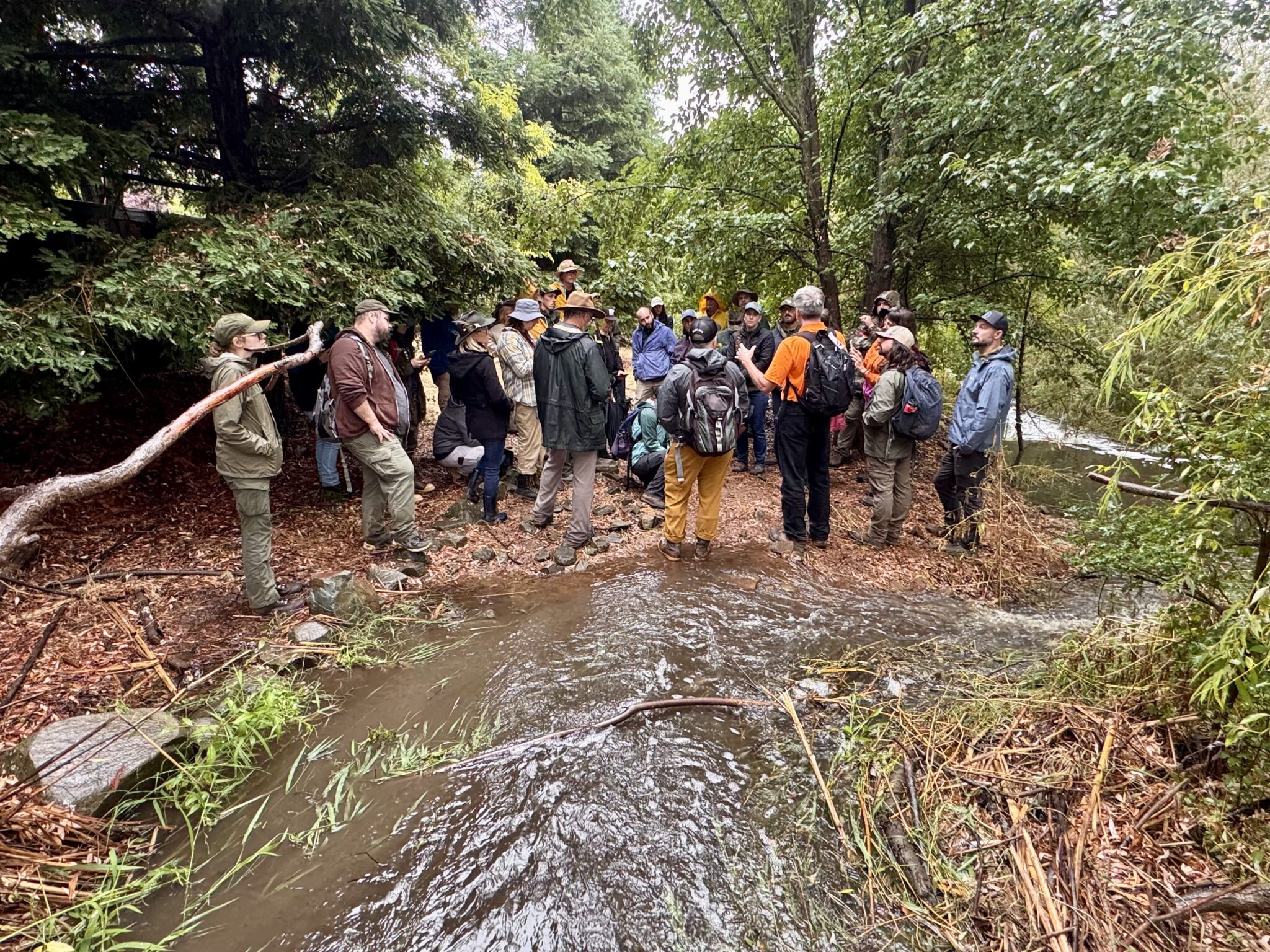
Thanks to the newly installed Pond Leveler, the neighborhood creek in El Dorado Hills stays stable even after heavy morning rains. Photo: Brock Dolman/OAEC
Grey Hayes, who manages The WATER Institute’s Beaver Coexistence Training and Support Program, shared that the program funded two Pond Levelers and an installation partnership, which enabled us to use their neighborhood creek as a BeaverCorps training site. Community services district members noted that, as a small neighborhood with a modest budget, this grant helped the project gain traction with the Board of Directors.
With that, the tour group set off to see the creek and the Pond Levelers in action. The newly installed devices were functioning effectively and stabilizing pond levels, even after heavy rain brought higher flows.

The Pond Leveler stays in place even during high flow events that naturally spill over the crest of the beaver dam. Photo: Brock Dolman/OAEC
With our first Beaver Coexistence Training and Tour complete, Grey shared that he is eager (yes, as a beaver) to continue connecting interested land managers and coexistence professionals to the resources they need to make this work possible. If you’d like to collaborate on ecosystem engineering with beaver on land you manage, visit our newly launched California Beaver Help Desk. There you can find effective coexistence resources, seek free technical assistance, apply for cost-sharing support, or enroll in the BeaverCorps!
The California Beaver Coexistence Training and Support Program is a partnership between the WATER Institute at Occidental Arts & Ecology Center, the Beaver Institute, and the California Department of Fish and Wildlife, whose Nature Based Solutions: Wetlands and Mountain Meadows Grant Program makes this work possible.






